The Early Spring Garden
Ever wonder about the origins of your garden plants? And why would this be important? Their origins give clues on how to grow them successfully. In this series of blogs, we will consider the origins of some commonly grown garden plants. In three parts, we will consider plants from the Mediterranean region, Europe and Asia, and the Americas. We’ll start with plants from the Mediterranean, common to the early spring garden:
- Arugula
- Broccoli and broccoli rabe
- Chard or Swiss Chard
- Fennel
- Lettuce
- Parsley
Sow these crops early in the spring when the soil can first be worked. Sow every two weeks throughout the spring for a continuous harvest. A late summer sowing will yield a fall crop.
Arugula, known as Eruca by the Romans, was recorded by Pliny the Elder in Historia Naturalis in the First Century A.D. Carl Linnaeas named Arugula Eruca sativa.
- In southern Italy, it’s called “rucola”.
- In the north, as “ruchetta”.
- In France, as “roquette”.
- To the English, “rocket”.
Arugula is a member of the brassica (mustard) family. It has a complex flavor variably mustard-like, peppery, spicy, tart or bitter. It grows well as a cool season crop; sow spring and in late summer.

Broccoli (Brassica oleracea var. italica). Broccoli resulted from the breeding of brassicas (mustard family) in the northern Mediterranean in around the 6th century BC. It was improved by selection in southern Italy and Sicily.
The word “broccoli” was first used in the 17th century is derived from the Italian broccoli, meaning the flowering head of a cabbage. Broccoli spread to northern Europe by the 18th century and was brought to America by Italian immigrants in the 19th century.
Other cultivars of Brassica oleracea include cabbage, cauliflower, Romanesco broccoli, kale, collard, kohlrabi, Brussels sprouts, and broccolini.
Broccoli is a cool weather crop requiring 14-15 weeks to harvest. Harvest the heads when they are still green.
Rapini, also called broccoli rabe, is a distinct species forming similar but smaller heads, and is a type of turnip (Brassica rapa). In comparison to broccoli, harvests can be as short as 35 to 40 days. Learn more here.
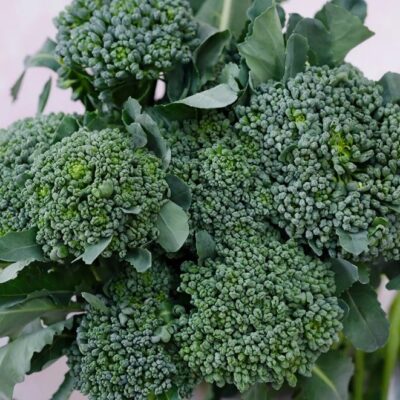
Chard or Swiss Chard (Beta vulgaris subsp. vulgaris) is a member of the Betoideae, a sub-family of the Amaranthaceae (the amaranth family), and a descendant of the wild sea beet. A cool season biennial, it is a close relative of the beet. Its cultivation dates to ancient Rome around 300-400 BC. Aristotle mentions the red-stalked chard in 350 BC. It was introduced into America by the early settlers and grown for its greens.
In 1848, it was listed among the beets: “…a hardy perennial plant, with leaves larger than the red beet…very thick and succulent. It is a native of the seacoasts of Spain and Portugal…cultivated in gardens entirely for the leaves, which are boiled as spinnage, or put in soups.” (Reference)
Sow chard in spring as soon as the soil can be worked, or in late summer for a fall crop. Plant seeds ½ inch deep, in rows 18-24” apart. Thin seedlings to 8-12” apart. It can withstand summer heat and mild frosts preferentially over the lettuces.
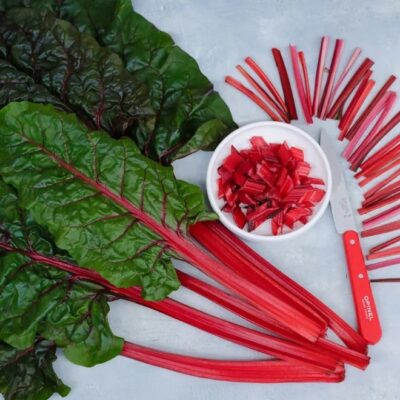
Fennel (Foeniculum vulgare) was prized by the ancient Greeks and Romans who used it as medicine, food, and insect repellent. A member of the carrot family, and indigenous to the Mediterranean, it has a flavor similar to anise. According to Greek mythology, Prometheus used a stalk of fennel to carry fire to earth from Mount Olympus.
Florence fennel is one of the three main herbs used in the preparation of absinthe, an alcoholic mixture which had purported medicinal qualities and became popular in the late 19th century France (apparently, they were keenly interested in its medicinal qualities)! The Greek name for fennel is marathon, the site of the famous battle, literally meaning “a plain with fennel.”
Sow in spring once the danger of frost has passed in soil rich in organic matter in well-drained soil. Thin seedlings 6 to 12” apart, to allow room for the bulbous stalk to form.
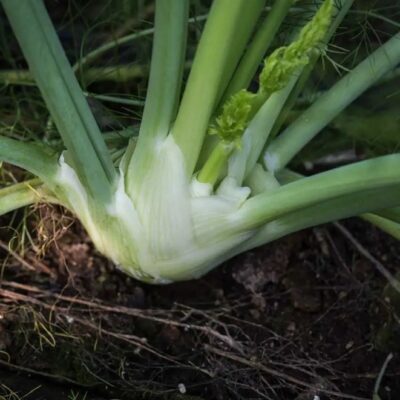
Lettuce (Lactuca sativa) is an annual in the Aster (Composite) family, most often eaten for its leaves. It originated in ancient Egypt, where it was cultivated for its succulent leaves and oil-rich seeds. There is evidence that it was under cultivation as early as 2680 BC. By 50 AD many types were described and appeared in medieval writings and several herbals. The Romans called it “lactuca” (meaning “dairy”), an allusion to the milky latex that exuded from cut stems. In 1586, Joachim Camerarius described three basic modern lettuces: head lettuce, loose-leaf lettuce and romaine (or cos) lettuce. Seed was first brought to the Americas from Europe in the late 15th century. Many varieties were developed between the 16th and 18th centuries that to this day, are under cultivation.
Lettuce grows best in full sun, nitrogen-rich soils with a pH of around 6.0 to 6.8. It is a cool weather crop, growing best at 60 to 65 F, but tolerates temperatures as low as 45 F. In warmer weather (>75F) lettuces will bolt (initiate a flowering stalk).
The Main Types include:
- Looseleaf
- Romaine (Cos)
- Iceberg
- Butterhead (Boston or Bibb)
- Batavian
- Red leaf
Buttercrunch lettuce is a butterhead type developed at Cornell University by George Raleigh, an All-America Selection.
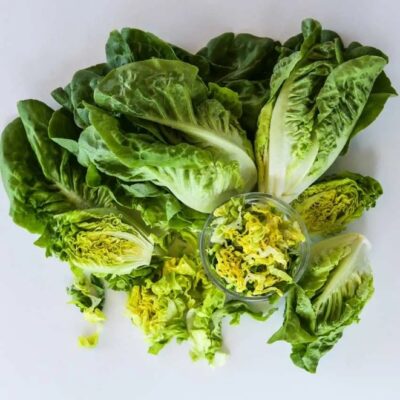
Mint, Spearmint (Mentha spicata) and Peppermint (Mentha x piperita). Peppermint is a hybrid cross between spearmint and water mint (Mentha aquatica).
Mint originated in the Mediterranean; the Greeks and Romans used mint in cooking, to infuse wines, and as a body rub. The mints found their way into Britain, and early settlers brought it to America. Today, its range is worldwide.
The mints are aromatic and contain terpenoid compounds (essential oils). The main aromatic compound is spearmint is carvone, in peppermint, menthol. Spearmint is used primarily for culinary purposes; peppermint for its medicinal qualities.
- In 1864, Eleanor Parkinson in The Complete Confectioner lists a recipe for peppermint candy.
- In 1887, Fanny Lemira Gillette wrote the White House Cook Book: A Selection of Choice Recipes Original and Selected, During a Period of Forty Years’ Practical Housekeeping that gave a recipe for a mint sauce to be served with roast lamb.
- Peppermint is often used medicinally, as a rub to relieve body aches, and as a tea as an aide to digestion and to help with insomnia.
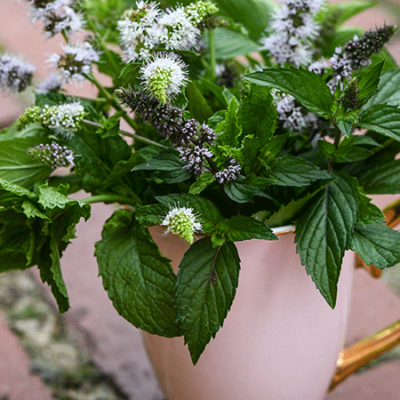
Parsley (Petroselinum crispum) is a hardy aromatic biennial in the carrot family (Apiaceae /Umbelliferae). The cultivars, neapolitanum (Italian) and crispum (curly-leaved) are grown for their leaves. The cultivar tuberosum (Hamburg) is grown for its enlarged edible root. Known to the ancient Greeks, it likely originated in the Mediterranean region. In the Middle Ages, it was grown throughout Europe. At one time, superstition had it that only pregnant women and witches could grow the herb. Fortunately, such restrictions no longer persist today!
Soak the seed overnight as an aid to germination. Plant seedlings 8-12” apart in relatively rich soil. Sow directly once the soil has warmed in spring. (Reference)
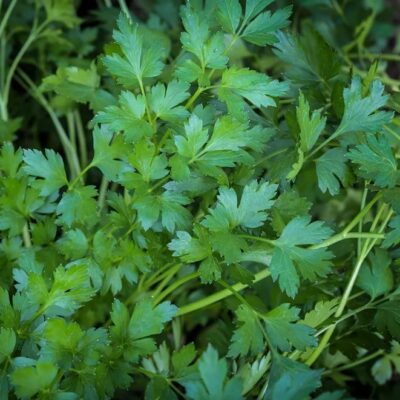
Peas (Pisum sativum) are a member of the legume family (Fabaceae). It is one of the oldest crops. The wild plant is native to the Mediterranean region, and remains found in the Middle East have been dated to the late Neolithic period. European settlers introduced the pea into cultivation to the New World.
The pea plant is a hardy leafy annual with trailing stems. Plant in full sun, in well drained, fertile soil. Plant in early spring as soon as the ground can be worked. Alternatively, sow in late summer for a fall crop. The stems climb using tendrils; therefore, they lend themselves to trellising.
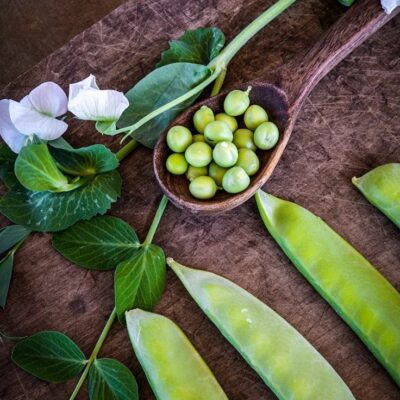
Many of the greens of the early spring garden (arugula, lettuce, chard and parsley) have their origins in the Mediterranean. In the next blog, we will consider the garden plants with Eurasian origins.
~ Signing off for now, Joe

